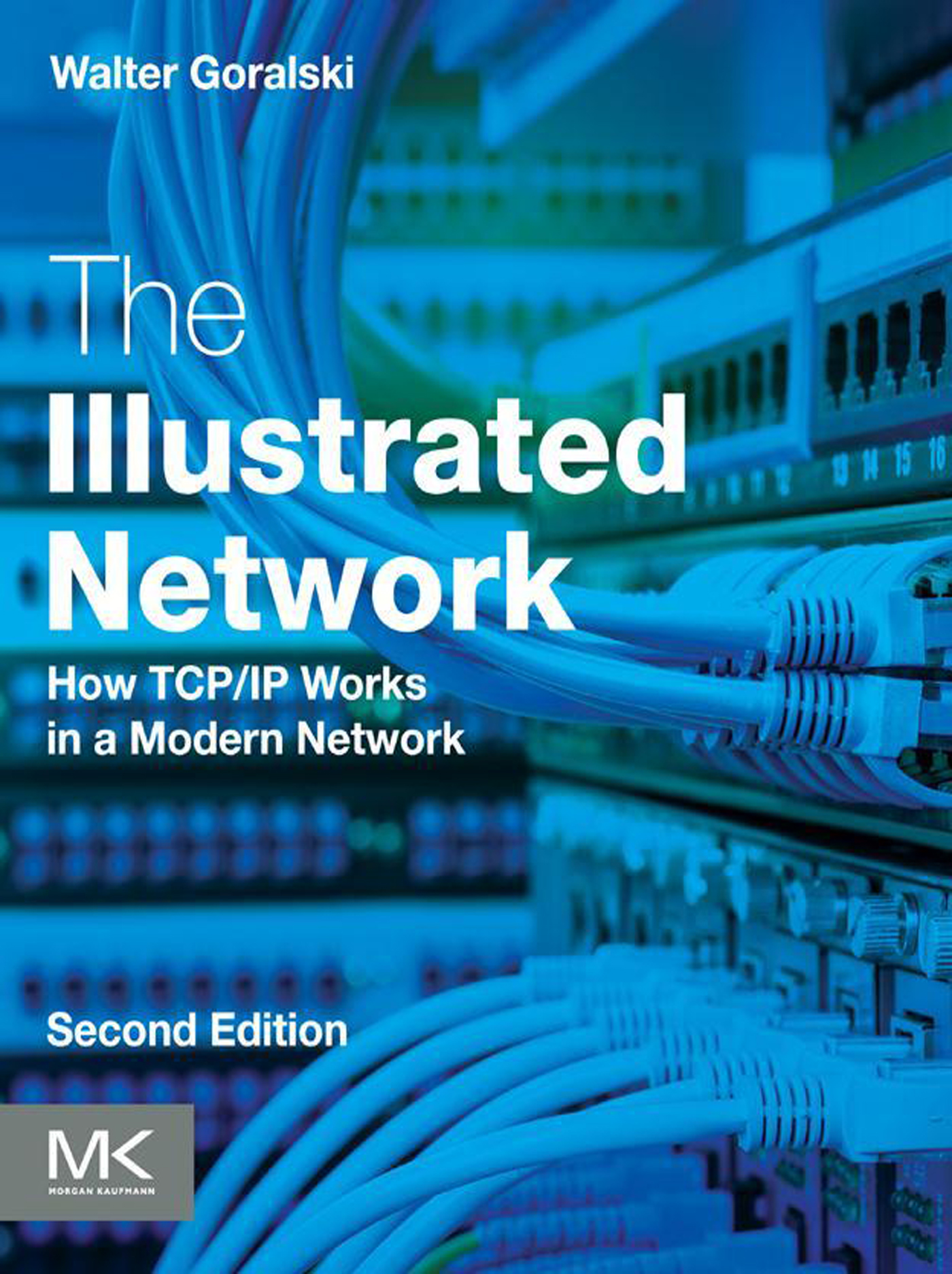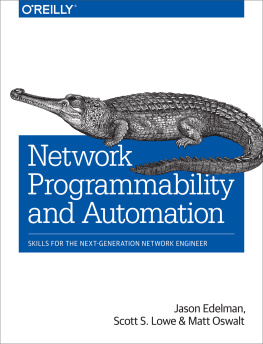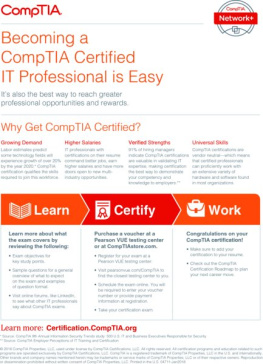Goralski - The Illustrated Network
Here you can read online Goralski - The Illustrated Network full text of the book (entire story) in english for free. Download pdf and epub, get meaning, cover and reviews about this ebook. year: 2017, publisher: Elsevier Science, genre: Computer. Description of the work, (preface) as well as reviews are available. Best literature library LitArk.com created for fans of good reading and offers a wide selection of genres:
Romance novel
Science fiction
Adventure
Detective
Science
History
Home and family
Prose
Art
Politics
Computer
Non-fiction
Religion
Business
Children
Humor
Choose a favorite category and find really read worthwhile books. Enjoy immersion in the world of imagination, feel the emotions of the characters or learn something new for yourself, make an fascinating discovery.

The Illustrated Network: summary, description and annotation
We offer to read an annotation, description, summary or preface (depends on what the author of the book "The Illustrated Network" wrote himself). If you haven't found the necessary information about the book — write in the comments, we will try to find it.
The Illustrated Network — read online for free the complete book (whole text) full work
Below is the text of the book, divided by pages. System saving the place of the last page read, allows you to conveniently read the book "The Illustrated Network" online for free, without having to search again every time where you left off. Put a bookmark, and you can go to the page where you finished reading at any time.
Font size:
Interval:
Bookmark:

- Tables in Chapter 2
- Tables in Chapter 3
- Tables in Chapter 4
- Tables in Chapter 5
- Tables in Chapter 7
- Tables in Chapter 8
- Tables in Chapter 9
- Tables in Chapter 10
- Tables in Chapter 11
- Tables in Chapter 12
- Tables in Chapter 14
- Tables in Chapter 15
- Tables in Chapter 16
- Tables in Chapter 17
- Tables in Chapter 18
- Tables in Chapter 19
- Tables in Chapter 21
- Tables in Chapter 22
- Tables in Chapter 23
- Tables in Chapter 24
- Tables in Chapter 25
- Tables in Chapter 26
- Tables in Chapter 30
- Tables in Chapter 31
- Tables in Chapter 32
- Tables in Chapter 33
- Tables in Chapter 34
- Figures in Preface
- Figures in Chapter 1
- Figures in Chapter 2
- Figures in Chapter 3
- Figures in Chapter 4
- Figures in Chapter 5
- Figures in Chapter 6
- Figures in Chapter 7
- Figures in Chapter 8
- Figures in Chapter 9
- Figures in Chapter 10
- Figures in Chapter 11
- Figures in Chapter 12
- Figures in Chapter 13
- Figures in Chapter 14
- Figures in Chapter 15
- Figures in Chapter 16
- Figures in Chapter 17
- Figures in Chapter 18
- Figures in Chapter 19
- Figures in Chapter 20
- Figures in Chapter 21
- Figures in Chapter 22
- Figures in Chapter 23
- Figures in Chapter 24
- Figures in Chapter 25
- Figures in Chapter 26
- Figures in Chapter 27
- Figures in Chapter 28
- Figures in Chapter 29
- Figures in Chapter 30
- Figures in Chapter 31
- Figures in Chapter 32
- Figures in Chapter 33
- Figures in Chapter 34
Second Edition
Walter Goralski

Morgan Kaufmann is an imprint of Elsevier
50 Hampshire Street, 5th Floor, Cambridge, MA 02139, United States
Copyright 2017, 2009 Elsevier Inc. All rights reserved.
No part of this publication may be reproduced or transmitted in any form or by any means, electronic or mechanical, including photocopying, recording, or any information storage and retrieval system, without permission in writing from the publisher. Details on how to seek permission, further information about the Publishers permissions policies and our arrangements with organizations such as the Copyright Clearance Center and the Copyright Licensing Agency, can be found at our website: www.elsevier.com/permissions.
This book and the individual contributions contained in it are protected under copyright by the Publisher (other than as may be noted herein).
Notices
Knowledge and best practice in this field are constantly changing. As new research and experience broaden our understanding, changes in research methods, professional practices, or medical treatment may become necessary.
Practitioners and researchers must always rely on their own experience and knowledge in evaluating and using any information, methods, compounds, or experiments described herein. In using such information or methods they should be mindful of their own safety and the safety of others, including parties for whom they have a professional responsibility.
To the fullest extent of the law, neither the Publisher nor the authors, contributors, or editors, assume any liability for any injury and/or damage to persons or property as a matter of products liability, negligence or otherwise, or from any use or operation of any methods, products, instructions, or ideas contained in the material herein.
British Library Cataloguing-in-Publication Data
A catalogue record for this book is available from the British Library
Library of Congress Cataloging-in-Publication Data
A catalog record for this book is available from the Library of Congress
ISBN: 978-0-12-811027-0
For Information on all Morgan Kaufmann publications visit our website at https://www.elsevier.com/books-and-journals

Publisher: Jonathan Simpson
Acquisition Editor: Todd Green
Editorial Project Manager: Lindsay Lawrence
Production Project Manager: Punithavathy Govindaradjane
Cover Designer: Miles Hitchen
Typeset by MPS Limited, Chennai, India
Walter Goralski has worked in the telecommunications and networking industry since 1970. He spent 14 years in the Bell System. After that he worked with minicomputers and LANs at Wang Laboratories and with the Internet at Pace University, where he was a graduate professor for 15 years. He joined Juniper Networks as a senior staff engineer in 2000 after 8 years as a technical trainer. Goralski is the author of 10 books about networking, including the bestselling SONET/SDH (now in its third edition). He has a masters degree in computer science from Pace University and several certificates in new areas of technology.
Mark Fei, Lead Instructor, Big Data and Analytics, Amazon Web Services Training and Certification
I am excited and honored to provide this brief foreword to the Second Edition of Walter Goralskis marvelous The Illustrated Network: How TCP/IP Works in a Modern Network. I have known Walter for over 25 years, having first met him when we worked together as technical instructors, where he delivered in-depth courses, seminars, and workshops on the inner workings of every aspect of networking to the worlds largest providers of telecommunications systems and networks. Walter is one of those gifted individuals who is able to take complex subjects and explain them, often visually, in ways that make them much easier to grasp and understand. Sitting in a class room with Walter at the whiteboard is a delightful experience, in which layers of technological obscurity are peeled away by his easy explanations and use of diagrams and other visual aids. The book you hold in your hands is the ready and portable embodiment of that experience and will deliver clarity, understanding, and insights to the reader in a similar fashion.
This book is not just another dense compendium of facts, standards, and details. Rather, it tells a story that will engage you in a journey of discovery from the beginnings, along various paths, and to many destinations on todays modern internet. Along the way, you will find the journey to be quite fascinating and, when you get to the end, you will fully understand exactly how you got there.
This is not a book on how to use the Internet. It is a book about how the Internet is made useful for you. The Internet is a public global network that runs on TCP/IP, which is frequently called the Internet Protocol Suite. A networking protocol is a set of rules that must be followed to accomplish something, and TCP/IP is actually a synthesis of the first two protocols that launched the Internet in its infancy, the Transmission Control Protocol (TCP) and the Internet Protocol (IP), which of course, allowed the transmission of information across the then youthful Internet. TCP/IP is the heart and soul of modern networks, and this book illustrates how that is accomplished. By using TCP/IP, we can observe how modern networks operate by following the transmission of modern data across all sorts of Internet connections.
Font size:
Interval:
Bookmark:
Similar books «The Illustrated Network»
Look at similar books to The Illustrated Network. We have selected literature similar in name and meaning in the hope of providing readers with more options to find new, interesting, not yet read works.
Discussion, reviews of the book The Illustrated Network and just readers' own opinions. Leave your comments, write what you think about the work, its meaning or the main characters. Specify what exactly you liked and what you didn't like, and why you think so.






